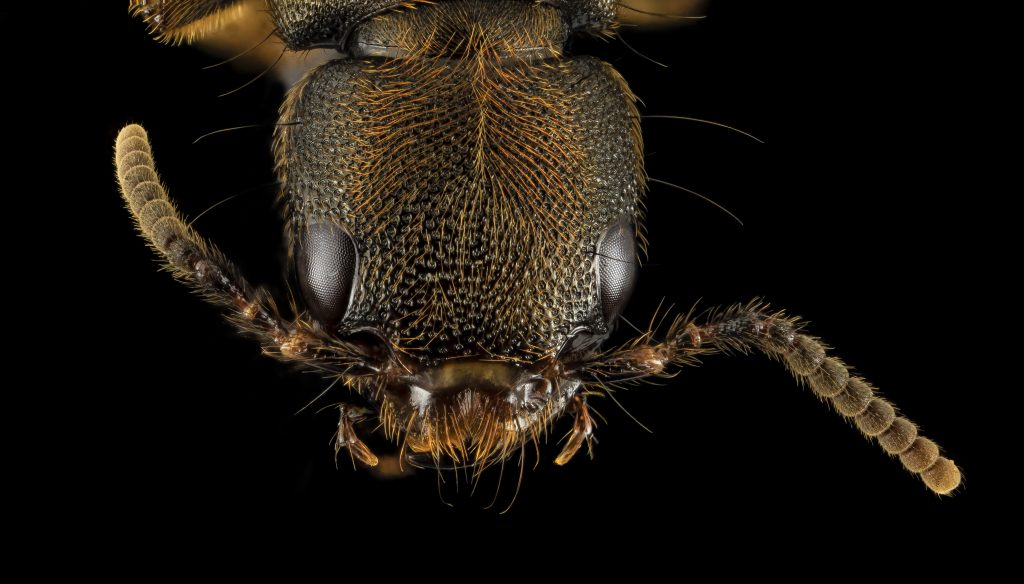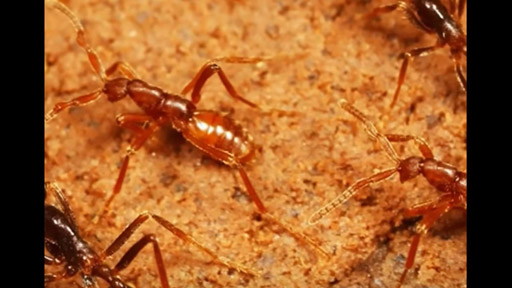
Image: Wikimedia Commons
Talk about a sneak attack! Some rove beetles have changed their body shape and chemical structure to look like army ants so they can infiltrate the colony and get close enough to eat their young.
The beetles have adapted long ant-like legs and a narrower waist to seamlessly blend in with their prey. A human could probably tell the two apart by looking closely, but the ants are blind, so the beetles have also undergone chemical changes that make them smell and feel like ants.
The impostors also go the extra mile by joining the ants on raids and even grooming them. Then, they devour the ants’ larvae, according to a study published in Current Biology.

The researchers say at least 12 separate species of rove beetles have independently evolved this disguise tactic. And what’s even more remarkable is that their last common ancestor lived more than 105 million years ago — meaning they’re not closely related.

Scientists call this process convergent evolution, in which two or more distinct species independently evolve similar traits. Take, for example, bats and dolphins, which have both developed the ability to hunt prey through sound. Or the way birds and insects both developed wings.
The study’s authors say their findings suggest that evolution isn’t truly random.
“The tape of life has been extremely predictable whenever rove beetles and army ants have come together,” said co-author Joseph Parker in a statement. “It begs the question: why has evolution followed this path so many times?”
Watch:
More on the rove beetle:




